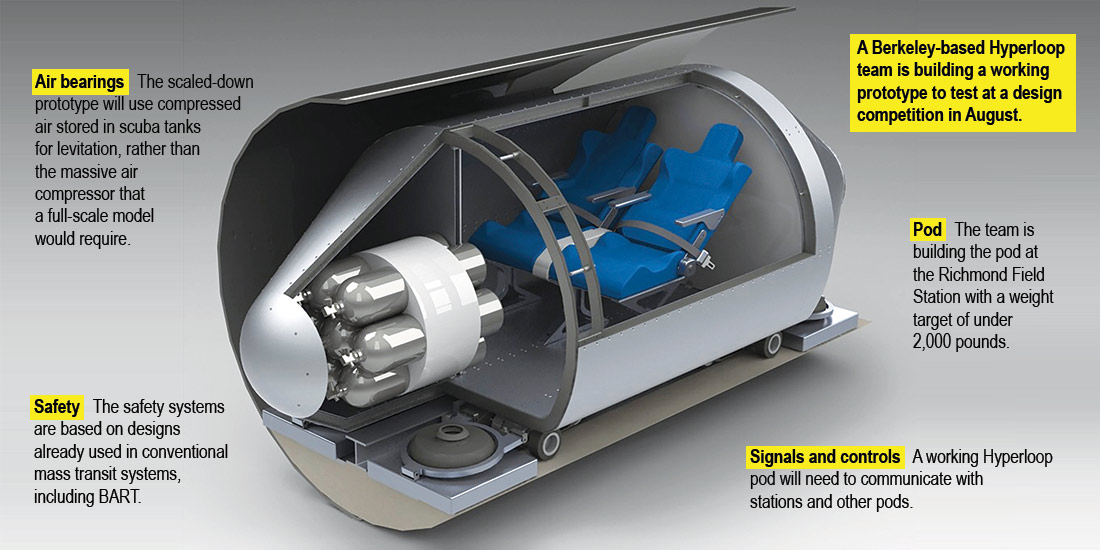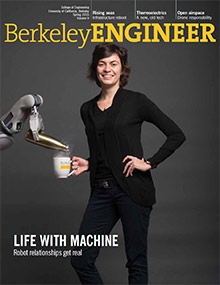
Learning to levitate
Before shooting their futuristic vehicle down a test track at high speeds for a design competition this summer, 40 Berkeley students must first make their Hyperloop pod levitate.
The world’s Hyperloop fascination started back in 2012, when SpaceX founder Elon Musk let loose the futuristic vision of a mass transit system in which people board pressurized capsules to zing through reduced-pressure tubes on rails of air.
Last year, SpaceX hosted a competition for university students, and in January, the Berkeley team was invited to build a working prototype of their design. The team is working toward launching a pod on a test track in Hawthorne, California this August.
Berkeley Hyperloop (bLoop) team members have set up shop at the Richmond Field Station to build a pod that is not quite full size, but still substantial enough to carry a 100-pound test dummy. Third-year mechanical engineering student Neelanjan Lahiri says that their design puts safety first. “The higher you levitate, the more air you need, and you need to make sure that the braking is good,” he says.
